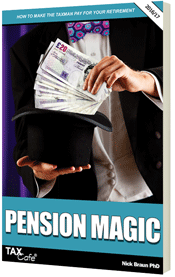Get Ready for Compulsory Pension Contributions
What do they mean for your business?
THE Pensions Act 2008 includes provisions requiring employers to set up pension arrangements for all employees and make contributions of at least 3% of pay. These provisions are likely to come into force in 2012.
Many employees are currently members of employer sponsored pension arrangements which can generally be grouped under one of the two following headings:
- Defined benefit schemes, including final salary schemes
- Defined contribution contracts, such as personal pensions and SIPPs
Employers who already have a pension scheme in place for their employees are largely unaffected by the Pensions Act measures. They will, however, have to ensure that the scheme passes various quality tests related to contributions and benefits.
For those not already covered, the Pensions Act requires employers to put in place suitable pension arrangements and start making contributions for employees.
Any of the pension arrangements outlined above can be used for this purpose. There will also be the choice of a “Personal Account”, being a money purchase scheme which the Government will set up in due course.
In practical terms, for most employers the choice of arrangement to comply with these rules will be between introducing personal pensions and using the new Personal Accounts, with a defined level of contribution.
Key Details
Employees will have to be automatically enrolled if they are:
- Aged 22 or over and below the state pension age
- Earning at least £5,035
Earnings include salary, overtime, bonus payments and some benefits. The earnings minimum is based on 2006/7 rates and is likely to be increased annually.
Employees have a right to opt out, but otherwise enrolment is automatic. Employees aged under 22 or over the state pension age but under 75 have an opt-in right.
For personal pension and Personal Account money purchase arrangements, the minimum contributions will be based on a band of earnings from £5,035 to £33,540 (at 2006/7 rates) and will be as follows:
- 3% by the employer
- 8% in total by the employer and employee combined (including the employee’s basic rate tax relief at source)
In practice, the most likely outcome will be the use of a Personal Account with 3% employer contributions, 4% employee contributions and 1% provided by tax relief.
The maximum employer cost, at 2006/7 rates, would be £855 per year per employee and the maximum employee contribution would be £1,140.
Transitional rules will apply for the first two years. Assuming that the provisions are brought into effect as intended in 2012, these will be as follows:
Contributions in: Employer Total
First year 2012/13 1% 2%
Second year 2013/14 2% 5%
Subsequent years 2014/15 etc 3% 8%
Compliance procedures will be put in place to ensure that employers make the required level of contribution and do not pressurise employees to exercise their opt-out rights.
However, it will be legitimate for employers to take the requirements of the Pensions Act into account in pay settlements, subject to not setting differential rates between those who are enrolled and those who opt-out.









